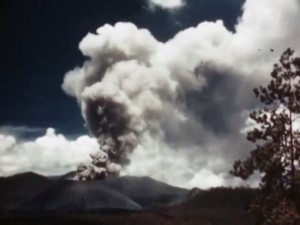
"Paracutin, by Ralph E. Gray, is probably the most complete and accurate record of Mexico's new world wonder yet to be produced on 16mm. film, even possibly in the 35mm. medium. Mr. Gray, long one of Mexico's most devoted American friends, was on the scene soon after the eruption broke out in a peasant's cornfield, and he has made four further trips to record changes and progress in the volcano's life. His superbly filmed footage presents the dramatic subject from every available viewpoint — even to seemingly dangerous closeups of the fiery rim — but it has been edited and is presented in strictly accurate chronological order. Human interest scenes of the effect of the giant cauldron on native life are plentiful and appealing, even to a striking sequence of the heavy dust deposits along the streets of Uruapan, more than thirty miles from the eruption. Paracutin is today a dramatic study of beauty and power; it should prove in the future to be a unique and valuable scientific record." Movie Makers, Dec. 1943, 474.
"George Kiehl's visit to Paris took him to many of the places of interest in the visitor. His fast moving travelog takes us through the main streets and some of the old sophisticated areas. We begin with the landmark of the 1889 Exhibition, followed by fountains, facades, monuments of marble and bronze, parades, tired souls asleep on the street, art centers, castles, water excursions, and, not to forget, Moulin Rouge and other night spots with choice centers of attraction" PSA Journal, Nov. 1958, 48.
"What would YOU think if you saw a youth lying on a snowy sidewalk pointing a camera up at a parking signs? No matter how crazy it sounds, this and other such peculiar antics on the part of University of Toronto students last year resulted in an Honourable Mention at the Canadian Film Awards. The name of the film in question: 'Parking on This Side.' Its producers: the members of the U. of T. Film Society. 'Parking', a short experimental film directed by Michel Sanouillet was the Society's major production last year and is bringing wide recognition to the U.T.F.S. among other universities and film makers across the continent" The Varsity.
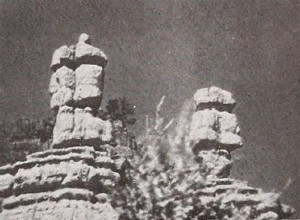
"Parks of Paradise was originally intended as a 2000 foot pictorial travelog that would cover every national park and monument in the United States, but travel conditions enforced a limitation, so Norris Smitley has confined the scope to include only the national parks of the Southwest, permitting a more detailed presentation of the material used. Many unusual scenes of popular subjects are shown in the picture, which is further distinguished by beautiful color and meticulous cinematography." Movie Makers, Dec. 1943, 478.
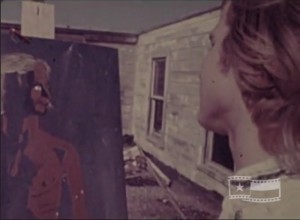
"This experimental film by Kenneth Anthony (credited as Ken Anthony) is a twist on the novel The Picture of Dorian Gray by Oscar Wilde. The main character, a young man, has a portrait of himself in a contemporary style. Over the course of the film, images of traditional paintings begin appearing on his body, much to his concern. After he leaves, his female companion is chased by the portrait. As more images appear on his body, the young man decides to destroy the portrait. He fails, however, and turns into a work of contemporary art himself. He is sent to a gallery by the women in the film, all of whom fall in love with the portrait. The final shot indicates that the portrait may come to life" Texas Archive of the Moving Image.
"Dr. McAfee presented technical subject in a manner that was interesting to the layman as well as the dentist. His photography was consistent and his continuity thorough." American Cinematographer, Dec. 1933, 342.
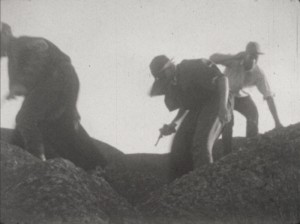
An ailing man sends his daughter to investigate a failing gold mine. With the assistance of a love interest she meets along the way, the woman fights the corruption and danger she encounters at the mine.
Passionflower is a Finnish entry by Matti Sokka of Helsinki, another "aftermath of the war" story about a widow and her emotional trials. It is in color and its 8 minutes tries to picture the futility of those who are left behind. Unusual camera angles, a little different story approach and exceptionally good exposure took this film out of the run-of-the-mill war story category," PSA Journal, Mar. 1970, 44.
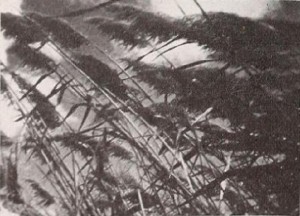
"Herman Bartei has, in Pathetique, made another contribution in the special field which he shares with Walt Disney and Leopold Stokowski — that of setting music to film. In this process, the music is the absolute, to which the footage must conform. While Disney achieves his conformity with drawings, Bartei uses actual cinematography of natural scenes. Mr. Bartel's absolute in this instance is the first movement of Tschaikowsky's Sixth — or Pathetique — Symphony, which is played from start to finish on double turntables, while the film sets forth what its maker feels is an interpretation in motion pictures of the music. The footage consists of autumn scenes, whose subject matter and tempo are varied to agree with the musical expression. The success or failure of this type of effort must depend upon the universality of the conviction of unity between musical and scenic episodes. Mr. Bartei reaches several high spots, notably one in which swirling crows against an angry sky are in very real harmony with the musical statement. Other scenes of autumn mist are very apposite to Tschaikowsky's phrases. The synthesis as a whole is both convincing and emotionally exciting." Movie Makers, Dec. 1943, 474.
Total Pages: 299